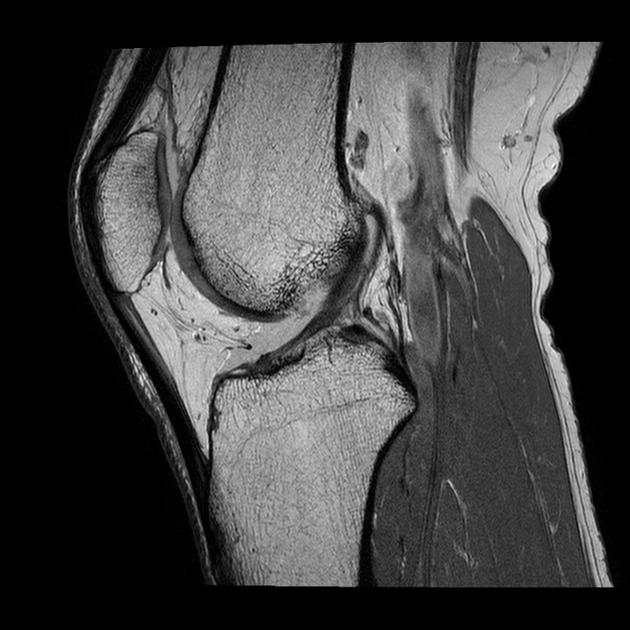
Causes for a knee MRI
Your doctor may order an MRI scan if they suspect any abnormalities within your knee joint. The test helps your doctor visualize the anatomy of your knee to determine the possible cause of your pain, inflammation, or weakness, without having to do surgery.
According to the Radiological Society of North America, an MRI is usually ordered to help doctors diagnose and treat many types of conditions. These include:
- arthritis and other degenerative joint disorders
- bone fractures
- damaged cartilage, ligaments, tendons, or meniscus
- decreased motion of the knee joint
- fluid buildup in the knee
- infection
- problems with implanted medical devices
- sports- or trauma-related injury
- tumors
Your doctor may order other imaging tests, such as an X-ray, along with your knee MRI. They could also order an MRI before performing a knee arthroscopy. This is a minor surgery where a doctor views the inside of your knee by making a small incision and inserting a scope with a camera.
Risks of a knee MRI
Unlike X-rays and CT scans, an MRI doesn’t use radiation. It’s considered a safer alternative for everyone, especially children and pregnant women. The radiation levels in CT scans are safe for adults, but they’re not safe for developing fetuses and need to be used with caution in children.
If you have implants containing metal, you face certain risks. The magnets used in an MRI can cause problems with pacemakers or make implanted screws or pins shift in the body.
Some people might have an allergic reaction to the contrast dye used in an MRI. The most common type of contrast dye is gadolinium. According to the Radiological Society of North America, these allergic reactions are often mild and easily controlled by medication.How to prepare for a knee MRI
Preparations for an MRI vary between testing facilities. Your doctor or attending technician will give you complete instructions on how to prepare for your specific test.
Before your MRI, your doctor will explain the test and do a complete physical and medical history. Be sure to tell them about any medication you’re taking, including over-the-counter drugs and herbal supplements. Mention any known allergies, too. Let them know if you have any implanted medical devices, because the test can affect them.
Tell your doctor if you’ve had allergic reactions to contrast dye in the past or if you’ve been diagnosed with kidney problems.
Let them know if you’re pregnant, concerned you may be pregnant, or breastfeeding. MRIs performed with radioactive contrast dye aren’t considered safe for pregnant women. Breastfeeding mothers should stop breastfeeding for about two days after the test.
The MRI machine is a tight, enclosed space. If you’re claustrophobic or scared of small spaces, be sure to talk with your doctor about your options. They may give you a sedative to help relax. If your claustrophobia is severe, your doctor may opt for an “open” MRI. This type of MRI uses a machine that doesn’t enclose your body.
Before the scan, you’ll change into a hospital gown and remove all jewelry and body piercings. If you’re using a contrast dye, an intravenous (IV) line will be inserted into your arm to inject the dye into your bloodstream.
An MRI machine looks like a giant wheel. The center is open so a flat table can slide in and out of the machine. The rounded, wheel-like part sends out the magnetic and radio waves used to produce images of your body.
You’ll lie on your back or side on a padded table. The technician may use pillows or straps to make your knee more comfortable during the test. This will also help keep your leg still so the machine can take the clearest images.
The technician will then slide you into the machine feet first. They’ll tell you when to hold still and hold your breath. These instructions will be given over a microphone, since the technician will be in a separate room, watching the monitors as they collect images.
You won’t feel the machine working, but there may be some loud noises, such as clacks or thuds, and possibly a whirring noise. The technician may give you earplugs or provide music.
The test typically takes between 30 minutes to an hour. Once the technician has recorded the images they need, you’ll be free to change back into your clothes and go about your day.
After a knee MRI
A radiologist will review your knee MRI scans and give the results to your doctor.
MRI images are black and white. Abnormalities may appear as bright white spots. These indicate areas where the contrast dye has collected due to enhanced cell activity.
When your doctor reviews the results, they’ll explain the problem and go over the next steps for treatment. Depending on your condition, treatment may require more tests, medication, physical rehabilitation, surgery, or some combination. Your doctor will help you decide which methods are best for you.
Source: Healthline
